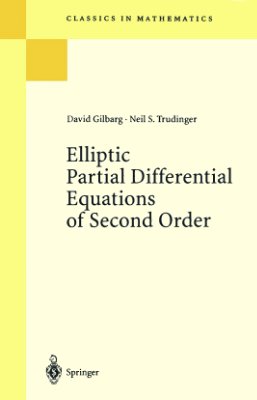Sрringer, 1984. - 530 pages.
This is a book of interest to any having to work with differential equations, either as a reference or as a book to lea from. The authors have taken trouble to make the treatment self-contained. It is suitable required reading for a PhD student. Although the material has been developed from lectures at Stanford, it has developed into an almost systematic coverage that is much longer than could be covered in a year's lectures.
Primarily addressed to graduate students this elegant book is accessible and useful to a broad spectrum of applied mathematicians.
Advanced students and professionals are snapping up this paperback text on linear and quasilinear partial differential equations. Whether you use their book as textbook or reference, the authors give you plenty to think about and work on, including an epilogue summarizing the latest research.
The aim of the book is to present "the systematic development of the general theory of second order quasilinear elliptic equations and of the linear theory required in the process". The book is divided into two parts. The first (Chapters 2-8) is devoted to the linear theory, the second (Chapters 9-15) to the theory of quasilinear partial differential equations. These 14 chapters are preceded by an Introduction (Chapter 1) which expounds the main ideas and can serve as a guide to the book.
This is a book of interest to any having to work with differential equations, either as a reference or as a book to lea from. The authors have taken trouble to make the treatment self-contained. It is suitable required reading for a PhD student. Although the material has been developed from lectures at Stanford, it has developed into an almost systematic coverage that is much longer than could be covered in a year's lectures.
Primarily addressed to graduate students this elegant book is accessible and useful to a broad spectrum of applied mathematicians.
Advanced students and professionals are snapping up this paperback text on linear and quasilinear partial differential equations. Whether you use their book as textbook or reference, the authors give you plenty to think about and work on, including an epilogue summarizing the latest research.
The aim of the book is to present "the systematic development of the general theory of second order quasilinear elliptic equations and of the linear theory required in the process". The book is divided into two parts. The first (Chapters 2-8) is devoted to the linear theory, the second (Chapters 9-15) to the theory of quasilinear partial differential equations. These 14 chapters are preceded by an Introduction (Chapter 1) which expounds the main ideas and can serve as a guide to the book.

